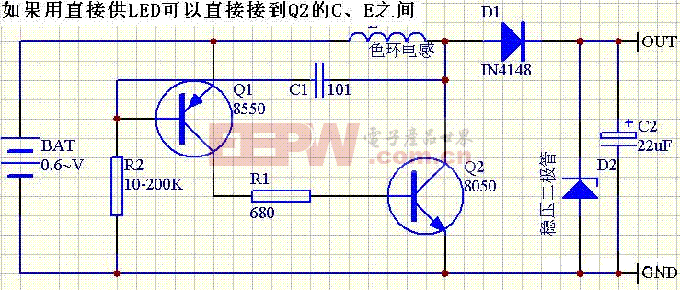介绍桌面widgets和AppWidget框架(译)
本文翻译自Android Developers Blog:Introducing home screen widgets and the AppWidget framework
本文引用地址://m.amcfsurvey.com/article/201610/305849.htmAndroid 1.5 SDK一个令人兴奋的新特性是AppWidget framework,这个框架允许开发者开发widgets,这些widgets可以被用户拖到用户的桌面并且可以交互。widgets可以提供一个full-featured apps的预览,例如可以显示即将到来的日历事件,或者一首后台播放的歌曲的详细信息。
当widgets被拖到桌面上,他们被指定一个保留的空间来显示应用提供的自定义内容。用户可以通过这个widget来和你的应用交互,例如暂停或切换歌曲。如果你有一个后台服务,你可以按照你自己的schedule更新你的widget,或者使用AppWidget framework提供的一个自动的更新机制。
在更高层次上,每个widget就是一个BroadcastReceiver,他们用XML metadata来描述widget的细节。AppWidget framework通过broadcast intents和你的widget通信,例如当需要更新的时候。Widget更新使用RemoteViews被构建和发送。这个RemoteViews被包装成一个layout和特定内容来显示到桌面上。
你可以非常容易的添加widgets到你的应用中,在这篇文章里我将给一个简单的例子:写一个widget来显示Wiktionary “Word of the day.”你可以从这里获取所有的源代码,我将在这里解释Appwidget相关的代码。
首先,你需要一个XML metadata描述这个widget,包括你想在桌面上保留的区域,一个你想展示的初始的layout,和你打算何时更新。Android桌面默认使用cell-based layout,因而它会rounds你请求的尺寸为最接近的cell的尺寸。这是有点疑惑,不过这里有个公式可以帮助你:
Minimum size in dip = (Number of cells * 74dip) – 2dip
在这个例子中,我想使我们的widget占用2 cells的宽度和1 cell的高度,这意味着我应该请求的最小尺寸为146dip * 72dip。我们将要每天更新一次我们的widget,大约是每86,400,000毫秒更新一次。以下是我们的widget的XML metadata:
接下来,让我们把XML metadata捆绑到AndroidManifest的BroadcasrReicever:
最后,让我们写BroadcastReceiver的代码来处理AppWidget的请求。为了帮助widgets管理所有
broadcasr事件,有个helper class叫AppWidgetProvider,这里我们将使用这个类。其中需要注意的最重要的一件事是我们将调用一个后台服务执行定期的更新。这是因BroadcastReceivers是一个Application Not Responding(ANR) timer,这意味着如果运行时间太长,可能需要提示用户强制关闭我们的应用。制作一个web请求可能需要花费一些时间,因此我们使用服务来避免ANR timeouts.
/**
* Define a simple widget that shows the Wiktionary “Word of the day.” To build
* an update we spawn a background {@link Service} to perform the API queries.
*/
public class WordWidget extends AppWidgetProvider {
@Override
public void onUpdate(Context context, AppWidgetManager appWidgetManager,
int[] appWidgetIds) {
// To prevent any ANR timeouts, we perform the update in a service
context.startService(new Intent(context, UpdateService.class));
}
public static class UpdateService extends Service {
@Override
public void onStart(Intent intent, int startId) {
// Build the widget update for today
RemoteViews updateViews = buildUpdate(this);
// Push update for this widget to the home screen
ComponentName thisWidget = new ComponentName(this, WordWidget.class);
AppWidgetManager manager = AppWidgetManager.getInstance(this);
manager.updateAppWidget(thisWidget, updateViews);
}
/**
* Build a widget update to show the current Wiktionary
* “Word of the day.” Will block until the online API returns.
*/
public RemoteViews buildUpdate(Context context) {
// Pick out month names from resources
Resources res = context.getResources();
String[] monthNames = res.getStringArray(R.array.month_names);
// Find current month and day
Time today = new Time();
today.setToNow();
// Build today’s page title, like “Wiktionary:Word of the day/March 21″
String pageName = res.getString(R.string.template_wotd_title,
monthNames[today.month], today.monthDay);
RemoteViews updateViews = null;
String pageContent = “”;
try {
// Try querying the Wiktionary API for today’s word
SimpleWikiHelper.prepareUserAgent(context);
pageContent = SimpleWikiHelper.getPageContent(pageName, false);
} catch (ApiException e) {
Log.e(”WordWidget”, “Couldn’t contact API”, e);
} catch (ParseException e) {
Log.e(”WordWidget”, “Couldn’t parse API response”, e);
}
// Use a regular expression to parse out the word and its definition
Pattern pattern = Pattern.compile(SimpleWikiHelper.WORD_OF_DAY_REGEX);
Matcher matcher = pattern.matcher(pageContent);
if (matcher.find()) {
// Build an update that holds the updated widget contents
updateViews = new RemoteViews(context.getPackageName(), R.layout.widget_word);
String wordTitle = matcher.group(1);
updateViews.setTextViewText(R.id.word_title, wordTitle);














评论